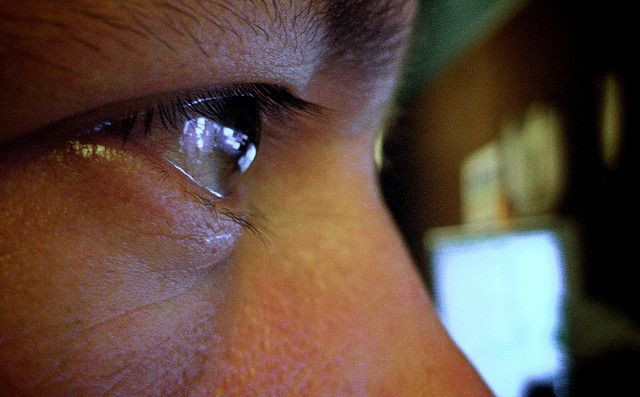Digital Eye Strain: Vision Council Finds 65% Of Americans Suffer From Too Much Time Spent In Front Of Screens

In this digital age, people look more at screens than they ever did before. Past research has shown the blue light these screens emit can cause sleep problems and weight gain; and now a new report from The Vision Council wants to add eye strain to the list.
The report, called Eyes Overexposed: The Digital Device Dilemma, was based on a survey of 10,000 Americans, of which nearly 65 percent suffered from digital eye strain. Symptoms of eye strain include dry, irritated eyes; blurred vision; eye fatigue; neck and back pain; and headaches. Digital eye strain is described by digital eye strain The Vision Council as "the physical discomfort felt after two or more hours in front of a digital screen and is associated with the close to mid-range distance of digital screens, including desktop and laptop computers, tablets, e-readers, and smartphones."
"Our eyes are not built to stare at digital screens all day, but the demands of our modern-day world frequently put us in front of a screen for hours every day," said Dr. Justin Bazan, medical adviser to The Vision Council, in a press release given to Medical Daily. "Patients underestimate how their technology use may be contributing to eye strain and do not consider ways to reduce this stress."
Coincidentally, 80 percent of surveyed Americans also use two or more devices simultaneously. Think of this as working on your computer, then checking an email or text on your phone. The report also found one out of every ten Americans is spending three-fourths of their time awake using a device — that’s nearly 18 hours a day!
The report found much younger generations are spending more time on their devices, leading to greater reports of digital eye strain. Eighty-seven percent of people in their 20s reported using two devices simultaneously, with 73 percent of those two-device users reporting digital eye strain. The older generations, The Vision Council found, spent less time on their devices and reported less eye strain -- but the vast majority of them were still suffering.
You may wondering, with screens now being an integral part of our lives, how do we minimize time spent basked in this blue light? Thankfully, there is hope.
"When using technology, many people think suffering with digital eye strain is unavoidable, but it doesn’t have to be,” said Mike Daley, CEO of The Vision Council, in the release. "The optical industry has responded to the shift in digital habits and has developed lens technology to protect eyes from blue light, glare and other environmental stressors."
The Vision Council laid out five tips to help reduce your digital eye strain:
- Wear computer eyewear and glasses with lens options that can help reduce symptoms of digital eye strain, block harmful blue light, and improve vision.
- Follow the 20-20-20 rule: Take a 20-second break from the screen every 20 minutes and look at something 20 feet away.
- Build an optically optimal workspace to mitigate outside irritants. For example, reduce overhead lighting to eliminate glare.
- ‘High-five’ the screen for the right viewing distance when sitting at a computer.
- Increase text size on devices to better define content on the screen.
Source: Eyes Overexposed: The Digital Device Dilemma. The Vision Council. 2016.
Published by Medicaldaily.com



























